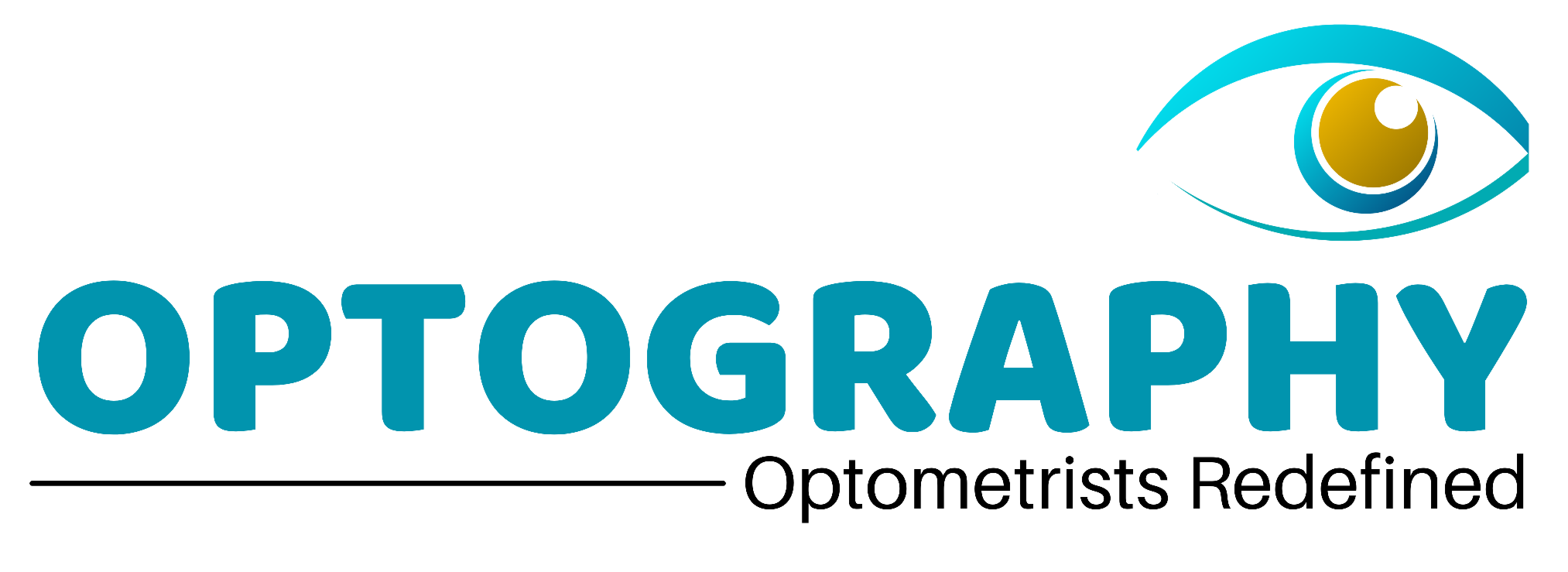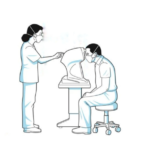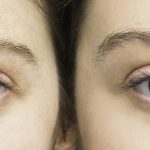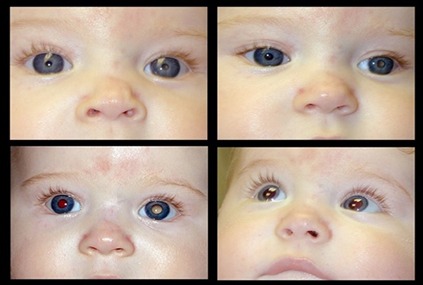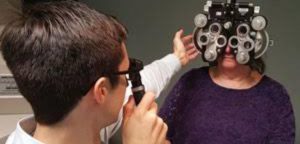Non-Contact Tonometer
A non-contact tonometer is a medical device used to measure intraocular pressure (IOP) without physically touching the eye. These instruments employ various techniques, such as air puff, dynamic contour analysis, or rebound methods, to assess IOP accurately. Non-contact tonometer’s are crucial in diagnosing and managing conditions like glaucoma. They are widely
used in optometry and ophthalmology clinics due to their non-invasive nature, ease of use, and ability to quickly measure IOP without causing discomfort to the patient.
Non-contact tonometer’s are instruments used to measure intraocular pressure (IOP) without touching the eye. Here are some common types:
1. Air-Puff Tonometer:
The Air-Puff Tonometer is a non-contact tonometer that measures intraocular pressure (IOP) by releasing a brief puff of air onto the cornea. The device calculates IOP based on the eye’s resistance to deformation caused by the air puff. It’s commonly used in optometry and ophthalmology clinics for routine screenings and glaucoma management because it’s quick, non-invasive, and doesn’t require any contact with the eye. However, it may not be as accurate
as some other tonometry methods, such as Goldmann applanation tonometry, especially in certain conditions like corneal irregularities.
Air-Puff Tonometer Usage:
Air-Puff Tonometer are widely used in optometry and ophthalmology clinics to measure intraocular pressure (IOP) quickly and non-invasively. Here’s how they are typically used:
Patient Preparation:
The patient sits comfortably in front of the tonometer, usually with their
chin resting on a chin rest to stabilize their head.
Alignment: The operator adjusts the position of the tonometer to ensure proper alignment
with the patient’s eye. This alignment is crucial for accurate measurements.
Air Puff: The tonometer releases a brief, gentle puff of air onto the cornea of the eye being
tested. This puff of air momentarily deforms the cornea.
Measurement: The tonometer measures the eye’s resistance to the air puff and calculates the
intraocular pressure based on the corneal response.
Results: The IOP measurement is displayed on the tonometer’s screen or interface. The
operator records the measurement in the patient’s medical records for future reference.
Repeat: In some cases, multiple measurements may be taken to ensure accuracy, especially if
the initial reading is significantly different from previous measurements or if there are concerns about the reliability of the measurement.
Air-Puff Tonometer’s are valued for their ease of use, speed, and non-invasiveness, making them suitable for routine screenings and glaucoma management in various clinical settings.
2. Dynamic Contour Tonometer:
The Dynamic Contour Tonometer is a type of non-contact tonometer used to measure intraocular pressure (IOP) without touching the eye. Unlike traditional methods like the air-puff tonometer, the dynamic contour tonometer assesses IOP by analyzing the contour of the cornea during a controlled deformation process. This technology allows for a more accurate measurement, especially in cases where the cornea’s shape is irregular or when traditional tonometry methods might yield less reliable results. The Dynamic Contour Tonometer is
particularly useful in clinical settings where precise IOP measurement is critical for the diagnosis and management of conditions such as glaucoma.
Dynamic Contour Tonometer Usage:
The Dynamic Contour Tonometer (DCT) is used to measure intraocular pressure (IOP) in a clinical setting. Here’s how it’s typically used:
Patient Preparation: The patient sits comfortably in front of the tonometer, often with their chin resting on a chin rest to stabilize their head.
Alignment: The operator positions the DCT to ensure proper alignment with the patient’s eye. This alignment is crucial for accurate measurements.
Corneal Deformation: Unlike traditional tonometer’s, the DCT assesses IOP by analyzing the contour of the cornea during a controlled deformation process. The device applies a controlled force to the cornea, causing it to deform slightly.
Measurement: The DCT measures the contour of the cornea during this controlled deformation and calculates the intraocular pressure based on the corneal response. This method allows for more accurate measurements, especially in cases of irregular corneas.
Results: The IOP measurement is displayed on the DCT’s screen or interface. The operator records the measurement in the patient’s medical records for further evaluation and management.
Repeat: Multiple measurements may be taken to ensure accuracy, especially if the initial reading differs significantly from previous measurements or if there are concerns about the reliability of the measurement.
The Dynamic Contour Tonometer is valued for its ability to provide accurate IOP
measurements, particularly in cases where traditional tonometry methods may yield less reliable results, such as with irregular corneas. It’s typically used in ophthalmology clinics and hospitals as part of routine eye examinations and glaucoma management.
3. Rebound Tonometer:
The Rebound Tonometer, also known as the “iCare” tonometer, is a type of non-contact tonometer used to measure intraocular pressure (IOP) without touching the cornea. It works by projecting a small probe onto the cornea, which then rebounds off the corneal surface. The tonometer measures the deceleration of the probe to determine the intraocular pressure. This method is quick, safe, and requires minimal patient cooperation, making it particularly useful in
pediatric or anxious patients. The Rebound Tonometer is portable and can be used in various clinical settings, including primary care offices and emergency rooms, for screening and monitoring conditions such as glaucoma.
Rebound Tonometer Usage:
The Rebound Tonometer, also known as the “iCare” tonometer, is straightforward to use and is often employed in various clinical settings. Here’s how it’s typically used:
Patient Preparation: The patient is seated comfortably in front of the tonometer, usually with
their head stabilized by resting their chin on a chin rest.
Alignment: The operator positions the Rebound Tonometer in front of the patient’s eye,
ensuring proper alignment for accurate measurements.
Probe Placement: The operator gently brings the handheld device close to the patient’s eye. The small probe at the tip of the tonometer is brought close to, but does not touch the cornea.
Measurement: The operator activates the device, and the tonometer releases a small probe that makes contact with the surface of the eye. The probe then rebounds off the cornea.
Intraocular Pressure Measurement: As the probe rebounds, the tonometer measures the deceleration of the probe. This measurement is used to calculate the intraocular pressure (IOP) of the eye.
Results: The IOP measurement is displayed on the tonometer’s screen or interface. The operator records the measurement in the patient’s medical records for further evaluation and management.
Repeat: If necessary, multiple measurements may be taken to ensure accuracy, especially if the initial reading differs significantly from previous measurements or if there are concerns about the reliability of the measurement.
The Rebound Tonometer Is valued for its portability, ease of use, and ability to provide quick and accurate IOP measurements without the need for anesthesia or numbing drops. It’s commonly used in various clinical settings, including primary care offices, ophthalmology
clinics, and emergency rooms.
4. Pneumotonometer:
A pneumotonometer is a type of tonometer used to measure intraocular pressure (IOP) by assessing the corneal response to a controlled stream of air. It works on the principle of applanation, where the force required to flatten a specific area of the cornea is measured and correlated with the intraocular pressure. While it’s not as commonly used as other tonometry methods like the Goldmann applanation tonometer or the air-puff tonometer, the pneumotonometer provides accurate IOP measurements and is suitable for clinical settings where precise measurements are essential, such as in diagnosing and managing glaucoma.
Pneumotonometer Usage:
The Pneumotonometer, also known as the pneumotonometer, is a device used to measure intraocular pressure (IOP) by analyzing the response of the cornea to a controlled stream of air. Here’s how it’s typically used:
Patient Preparation: The patient is seated comfortably in front of the tonometer, often with their head stabilized by resting their chin on a chin rest.
Alignment: The operator positions the Pneumotonometer in front of the patient’s eye, ensuring proper alignment for accurate measurements.
Activation: The operator activates the device, initiating a controlled stream of air directed at the cornea of the patient’s eye.
Corneal Response: As the air stream contacts the cornea, it causes a slight deformation. The Pneumotonometer measures the force required to induce this deformation.
Measurement: The tonometer calculates the intraocular pressure (IOP) based on the corneal response to the air stream. This measurement is displayed on the tonometer’s screen or interface.
Results: The IOP measurement is recorded by the operator in the patient’s medical records for further evaluation and management.
Repeat: If necessary, multiple measurements may be taken to ensure accuracy, especially if the initial reading differs significantly from previous measurements or if there are concerns about the reliability of the measurement.
The Pneumotonometer is valued for its ability to provide accurate IOP measurements quickly and non-invasively. It’s commonly used in ophthalmology clinics and hospitals as part of routine eye examinations, glaucoma management, and other ocular conditions where monitoring IOP is essential.
In conclusion, non-contact tonometer’s play a crucial role in ophthalmology and optometry by providing non-invasive and efficient methods for measuring intraocular pressure (IOP). These devices, such as the Air-Puff Tonometer, Dynamic Contour Tonometer, Rebound Tonometer, and Pneumotonometer, offer various techniques to assess IOP accurately without touching the
eye directly. They are valuable tools for screening, diagnosing, and managing conditions like glaucoma, where monitoring IOP is essential for preserving vision. With their ease of use, portability, and ability to deliver quick results, non-contact tonometer’s contribute significantly to the comprehensive care of patients with ocular conditions.
